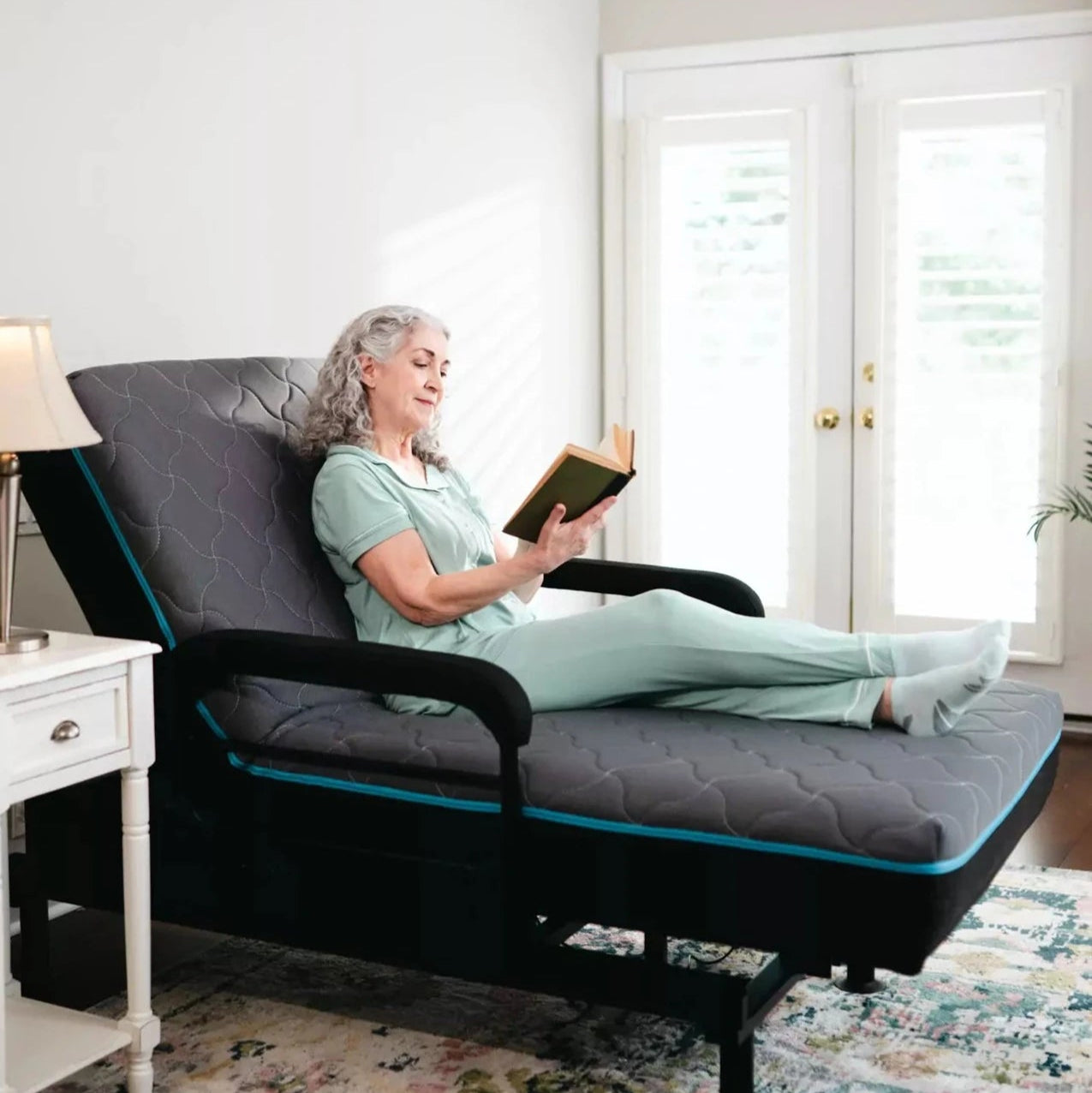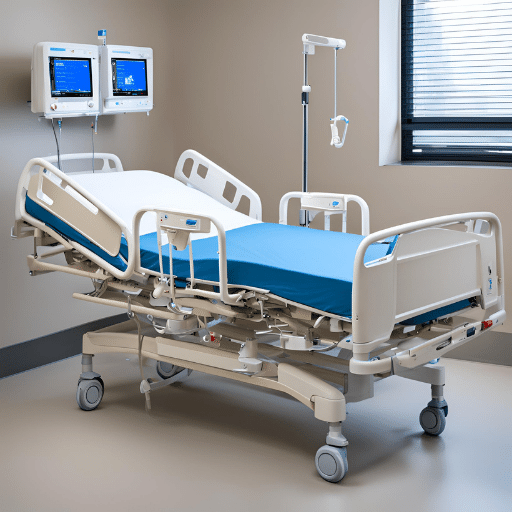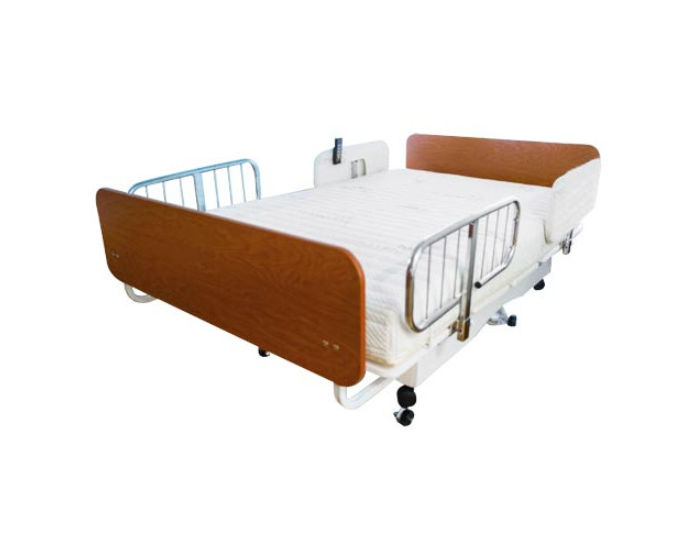Things about Hospital Beds For Home Use
Things about Hospital Beds For Home Use
Blog Article
The Hospital Beds For Home Use Statements
Table of ContentsWhat Does Hospital Beds For Home Use Do?An Unbiased View of Hospital Beds For Home UseThe 20-Second Trick For Hospital Beds For Home UseThe Facts About Hospital Beds For Home Use RevealedSome Known Questions About Hospital Beds For Home Use.Hospital Beds For Home Use Fundamentals ExplainedThe 7-Minute Rule for Hospital Beds For Home Use
There are 3 main sorts of healthcare facility beds: manual, semi-electric, and fully-electric. Even more types of clinical beds exist and they are noted below. These beds make use of hand cranks to change the bed's height and increase and reduce the head and the foot. Hand cranks are generally located at the foot of the bed and call for an individual that is literally efficient in operating.
Semi-electric beds have an electric motor to increase and reduce the head and foot parts of the bed (hospital beds for home use). Full-electric beds have an electric motor that can raise the head and foot areas of the bed as well as the entire height and positioning of the bed.
Fascination About Hospital Beds For Home Use
There are numerous types of hospital beds, each developed to satisfy particular client requirements. Right here are some typical types: This is the most typical kind of hospital bed, made for basic clinical use.
Reduced to the ground than a standard bed. This kind of bed is developed for bigger individuals, with a larger structure and higher weight ability than a conventional bed.
This type of bed is developed for critically unwell clients who need open monitoring and specialized clinical tools such as ventilators and mixture pumps. This kind of bed is created for use during labor and delivery, with flexible settings and features to sustain the mom and child throughout the birth process.
The Best Strategy To Use For Hospital Beds For Home Use
Numerous function and the accessories carry out increasing traction to various components of the vertebra and the extremities without moving the body. These are just a few instances of the kinds of medical facility beds available. The certain sort of bed utilized will depend on the individual's problem, medical needs, and other variables.
Here is things you need to understand. A one-function medical facility bed is a clinical bed that permits a person to relocate just the head or foot section up or down. A 2 feature health center bed normally describes a sort of medical bed that has two flexible features to help patients in health centers or care facilities.

What Does Hospital Beds For Home Use Do?
A 7-function ICU bed is a sort of medical bed that gives a number of adjustable features to support seriously unwell individuals in an extensive treatment unit (ICU) (hospital beds for home use). The 7 functions usually consist of: Back-rest adjustment: The backrest can be readjusted to different angles to assist the patient sit up or relax pleasantly
Height modification: The bed can be raised or lowered to make it much easier for people to obtain in and out of bed, and for caretakers to offer care. Trendelenburg setting: The whole bed can be tilted to advertise blood flow and flow in the body. Reverse Trendelenburg setting: The bed can likewise be slanted in the opposite direction to promote blood circulation and flow in the top body.
1. What Dimension is a Healthcare Facility Bed? 2. Just how much Does a Health Center Bed Expense? 3. Why Do Health Center Beds Have Side Bed Rails? 4. What Are The Main Hospital Bed Parts?. While even more inexpensive than electrical models, these beds need exertion for modifications. The primary advantages of hand-operated beds are their cost and dependability, as they don't rely on electrical energy. The requirement for hand-operated initiative can be a limitation in circumstances where fast changes are required or where caretakers encounter physical difficulties.
Hospital Beds For Home Use for Beginners
Semi-electric healthcare facility beds use a balance of manual and electrical controls. These beds offer an optimal middle ground in between manual and totally electric choices, offering ease of use without the full expense of electric designs.
Semi-electric beds are fit for clients who require modest changes to the head and foot sections but can handle without frequent elevation modifications. This makes them a cost-effective service for those looking for convenience and convenience without the demand for continuous repositioning. Fully electric medical facility beds feature electrical controls for smooth changes to the elevation, head, and foot areas.
Specialty hospital beds, such as ICU beds, long-lasting treatment beds, and bariatric beds, are thoroughly made to attend to specific clinical demands. These beds use tailored look after diverse client teams, boosting both outcomes and convenience. In the complying with areas, we will check out the major types of useful reference specialized medical facility beds, describing their particular benefits and applications.
With years of experience in producing electric direct actuators - hospital beds for home use and close partnership with the health care sector, TiMOTION is well-positioned to supply trusted healthcare options. Our up and down integrated company handles every action of the production process, from design to actuator setting up, guaranteeing we provide remarkable worth and personalized services customized to your specific needs
The 10-Second Trick For Hospital Beds For Home Use

To read more about incorporating these innovations right into your items, contact us today. More analysis:.
Data is sourced from the Medicare Expense Report.

Our Hospital Beds For Home Use Ideas
A medical facility bed is a bed made specifically for medical functions. It is not only a location for clients to rest, however additionally a system for clinical operations. Unlike normal home beds, healthcare facility beds generally have flexible features, which can help with clinical personnel to make various check my blog changes according to the requirements of individuals, such as altering the height, inclination, and assistance angle of the back and legs of the bed.
Report this page